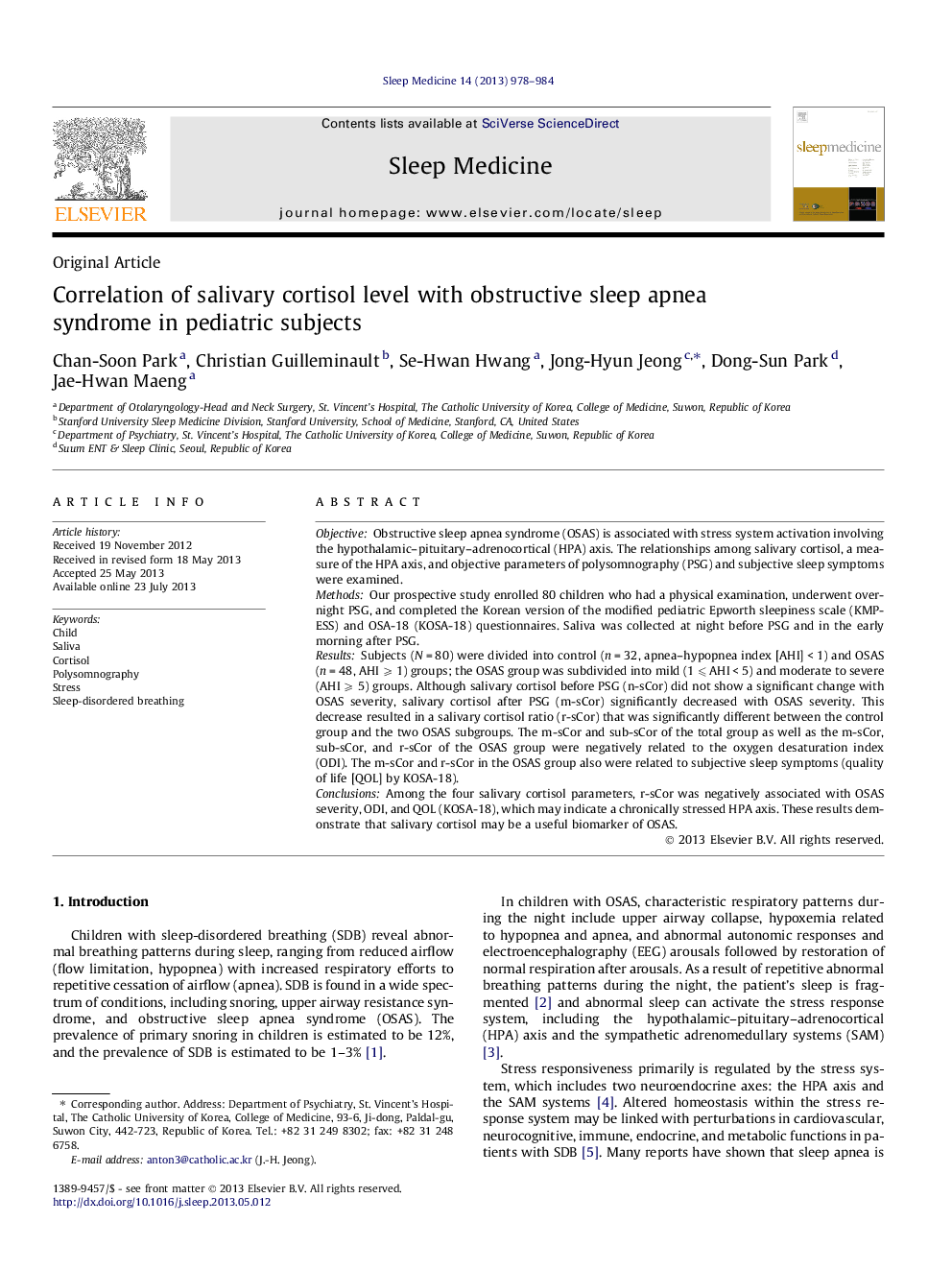| Article ID | Journal | Published Year | Pages | File Type |
|---|---|---|---|---|
| 3176193 | Sleep Medicine | 2013 | 7 Pages |
ObjectiveObstructive sleep apnea syndrome (OSAS) is associated with stress system activation involving the hypothalamic–pituitary–adrenocortical (HPA) axis. The relationships among salivary cortisol, a measure of the HPA axis, and objective parameters of polysomnography (PSG) and subjective sleep symptoms were examined.MethodsOur prospective study enrolled 80 children who had a physical examination, underwent overnight PSG, and completed the Korean version of the modified pediatric Epworth sleepiness scale (KMPESS) and OSA-18 (KOSA-18) questionnaires. Saliva was collected at night before PSG and in the early morning after PSG.ResultsSubjects (N = 80) were divided into control (n = 32, apnea–hypopnea index [AHI] < 1) and OSAS (n = 48, AHI ⩾ 1) groups; the OSAS group was subdivided into mild (1 ⩽ AHI < 5) and moderate to severe (AHI ⩾ 5) groups. Although salivary cortisol before PSG (n-sCor) did not show a significant change with OSAS severity, salivary cortisol after PSG (m-sCor) significantly decreased with OSAS severity. This decrease resulted in a salivary cortisol ratio (r-sCor) that was significantly different between the control group and the two OSAS subgroups. The m-sCor and sub-sCor of the total group as well as the m-sCor, sub-sCor, and r-sCor of the OSAS group were negatively related to the oxygen desaturation index (ODI). The m-sCor and r-sCor in the OSAS group also were related to subjective sleep symptoms (quality of life [QOL] by KOSA-18).ConclusionsAmong the four salivary cortisol parameters, r-sCor was negatively associated with OSAS severity, ODI, and QOL (KOSA-18), which may indicate a chronically stressed HPA axis. These results demonstrate that salivary cortisol may be a useful biomarker of OSAS.
